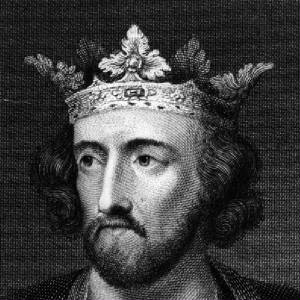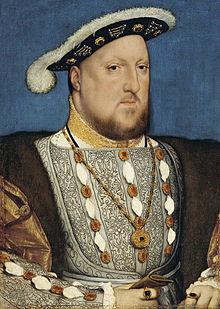Caerwys has a long and involved history between Royalty and the area, since the latter period of the 11th century. Caerwys – apart from being known as ‘the home of the Eisteddfod’ and where the ‘original street grid pattern of Philadelphia’ in America originated from – very little is further commonly known. The below photographs and information provides an insight into the ‘ Royal Connections ‘
Gruffydd ap Cynan The Prince of Gwynedd married a Caerwys female named Angharad. They owned a property called Maesmynan Hall, Afonwen, which is situated in the Caerwys Community area. The Prince held his Court in Caerwys ‘ for his Welsh Friends ’ Their main residence was in the Conwy Valley, where ap Cynan’s ‘ Gwynedd Army ’ was stationed. Gruffydd ap Cynan inherited the title of Prince of Gwynedd from a relative named Gruffydd ap Llywelyn – who was the last High King of Wales. Prince Llywelyn and Cynan’s father also named Cynan, were both killed in a battle with the Normans in 1063, which took place in the Conwy Valley. However, Gruffydd ap Cynan did not assert his claim to the title until many years later, when he returned from Ireland having been living with his mother.

Gruffydd ap Cynanin – Coat of Arms

in Chester prison
David, a Welsh Prince signed a treaty with Henry lll in relation to the Catholic religion. The Pope was concerned that Prince David had signed the treaty under duress – and a meeting was called between King Henry lll and Prince David *. They were both summoned to appear before the Welsh Abbotts of Cymer and Aberconwy – the Pope declared that the meeting would take place in the Caerwys Church. The reason for the meeting being held in Caerwys, was that Prince David continued to carry on the tradition of his ancestor, Gruffydd ap Cynan by residing at Maesmynan Hall in Afonwen and holding ‘ The Gwynedd Court ’ in Caerwys ( for his Welsh friends ). Unfortunately, documentation cannot be found to ascertain the outcome of this historical meeting.* ( Prince David’s wife is buried in St.Michael’s Church ).

In 1290 King Edward 1 granted the second Royal Charter to the town of Caerwys, which was unique and of immense significance – as it was the only Welsh Borough created by the Normans that was not a fortress town, such as Flint, Rhuddlan, Conwy, Beaumaris, Caernarfon, Criccieth, Harlech, Bere and Aberystwyth – all with their castles, except Caerwys ! There are two possibilities; firstly that Caerwys had become the home of Prince Llewelyn ap Gruffyd and later Prince David who as mentioned above, resided in Maesmynan Hall, Afonwen and held their Court in Caerwys; secondly, the Charter was granted for commercial motives – it is suggested that King Edward granted the charter as a concession to Welsh traders, confident that the more belligerent Welsh nobles would be kept firmly in check by the military establishments, which had been set up in Flint and Rhuddlan.

Henry VIII declared Caerwys to be the venue for Craftsman of Poetry and Music – this was the first ever known Eisteddfod to be held anywhere and was held to ‘ codify the bardic laws ’. During this time Henry was aware of the true character and significance of the Welsh professional poets. They were educated, informed, intelligent and anti English – and they had the ‘ ear ’ of the Welsh nobles. It suited Henry’s purpose, as he was struggling against rebels from various parts of the country, including North Wales’ Owain Glyndwr. What Henry wanted was to discourage the travelling poets of Wales from preaching the English defeats – both in England and Wales. When the Welsh professional poets travelled to Caerwys, they were lumped together with vagabonds and buskers, who were liable to be whipped and locked up in stocks by unfriendly locals as they made their journeys. Some communities even took it upon themselves, under cover of the King’s legislation, to kill beggars and chop musicians’ ears off. The event was held and no one – who finally attended, reached the criteria expected !

Elizabeth l declared Caerwys to be the ‘ home of the Eisteddfod ’ Elizabeth issued a proclamation which authorised that anyone claiming to be a poet or a musician – to come together and be listened and judged. The Eisteddfod mainly was to sort out ‘ the wheat from the chaff ’ to allow the poets to identify themselves and end the unflattering inclusion of themselves among the ranks of common tramps, footpads, beggars and buskers. They has become so fed up of trying to follow their vocation in the face of wholesale abuse that they petitioned the Queen – successfully, to allow them to hold a contest to prove their worth. Fifty five people were awarded licences, which authorized them to travel in England and Wales and perform their talents before the people of the realm. The Eisteddfod was held in the old Town Hall, which was situated behind Compton House, Near The Town Square.

Charles ll gave William Penn land in the ‘ Newfoundland ’ of America, which to-day is known as Pennsylvania. William Penn was a Quaker and he was also a personal friend of Thomas Wynne, who resided just outside the Caerwys Community but carried on his trade as a Barber – Surgeon in the town of Caerwys – where he later purchased a house. Thomas Wynne was only one of a few people, at that time, who were authorised to carry out operations without the use of anaesthetic. In 1682 both William Penn and Thomas Wynne sailed on The Welcome to America with the blessing of Charles ll. The original streets of Philadelphia were designed on the street grid pattern of Caerwys. Many properties were built in the region which reflected designs of properties in the Caerwys area. Thomas Wynne became the first speaker of the Provincial Government, a Provincial Judge and a Justice of the Peace.

Royal Celebrations in Caerwys – 1968 and 1990
1968 – Eisteddfod Celebration
In 1968 Caerwys celebrated its 400th anniversary of the ‘ home of the Eisteddfod’. Queen Elizabeth ll was the Patron of the celebrations and the late Princess Margaret, Countess of Snowdon attended the celebrations on behalf of the Queen. A total of 32,000 people visited Caerwys over the three day period that the celebrations were held. The Gorsedd of Bards paraded through the streets of Caerwys to the Eisteddfod field in full bardic regalia – the first time ever outside a National Eisteddfod.

1990 – Royal Charter Celebration
During July 1990 Caerwys celebrated its 700th anniversary of the granting of the Royal Charter by Edward l in 1290. Again, Princess Margaret attended the celebrations – which included a week-long of various events.

Princess Margaret
Countess of Snowdon

Royal Visit to Caerwys – July 1990
Princess Margaret – Countess of Snowdon walking in Caerwys High Street with Mayor Phillip Parry.

